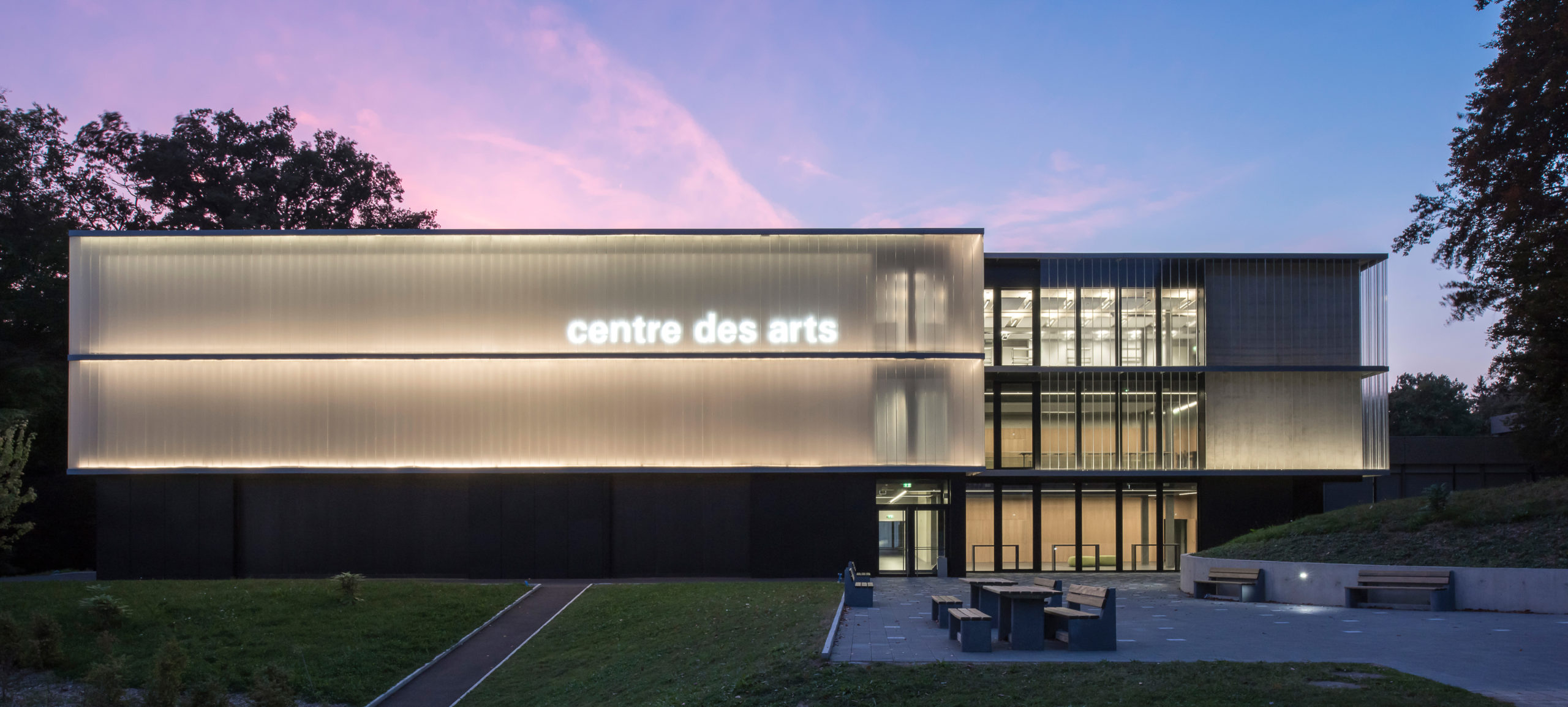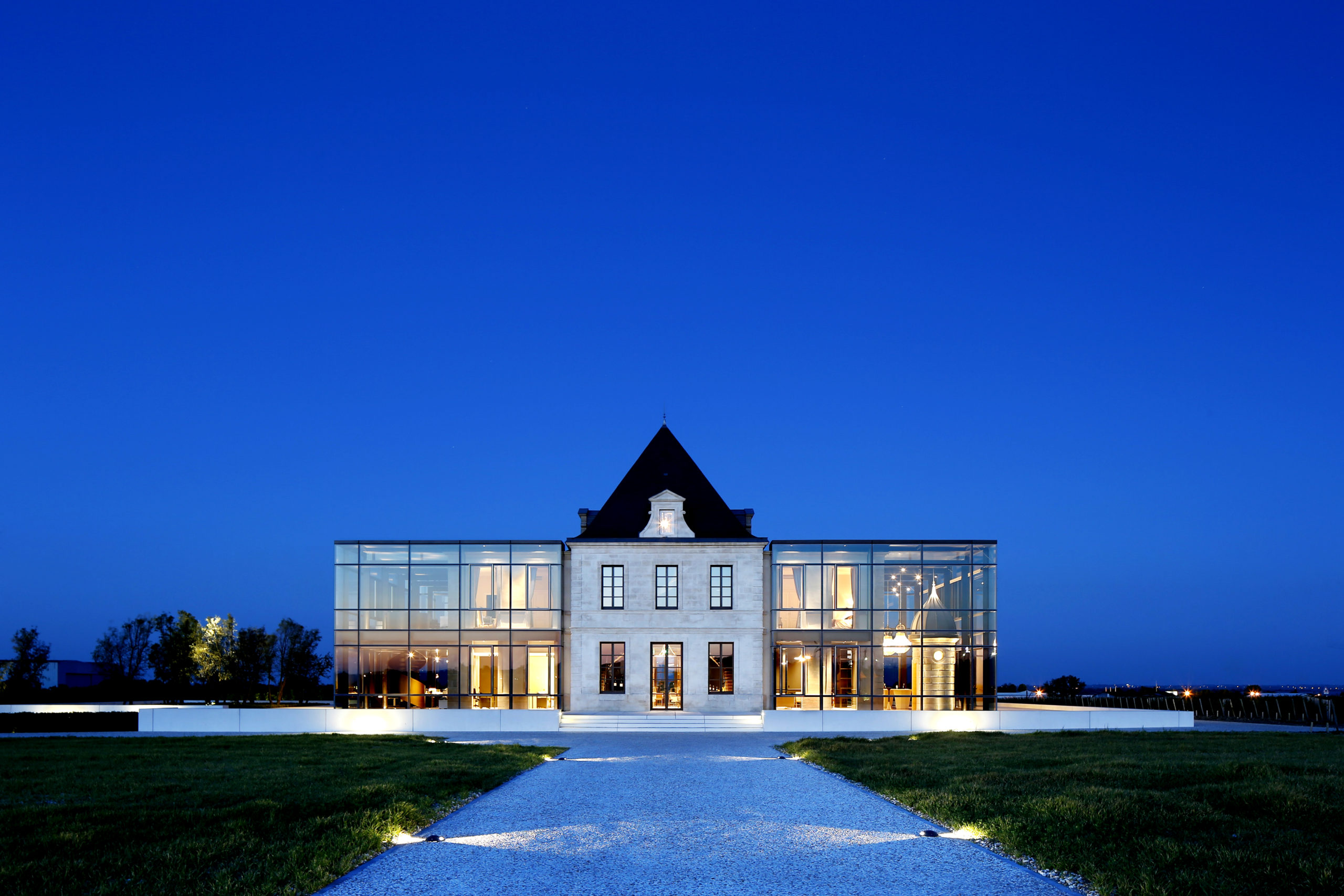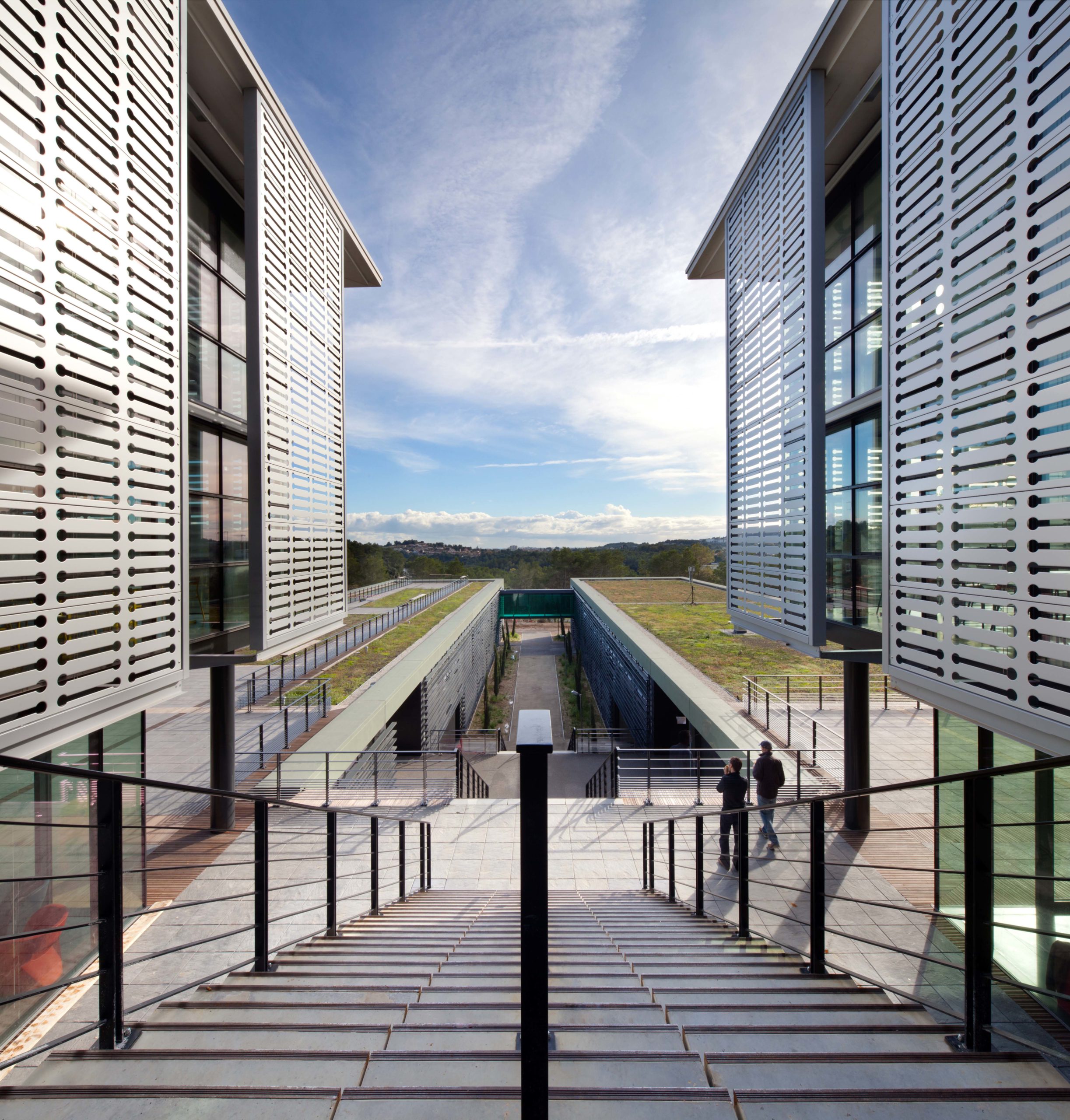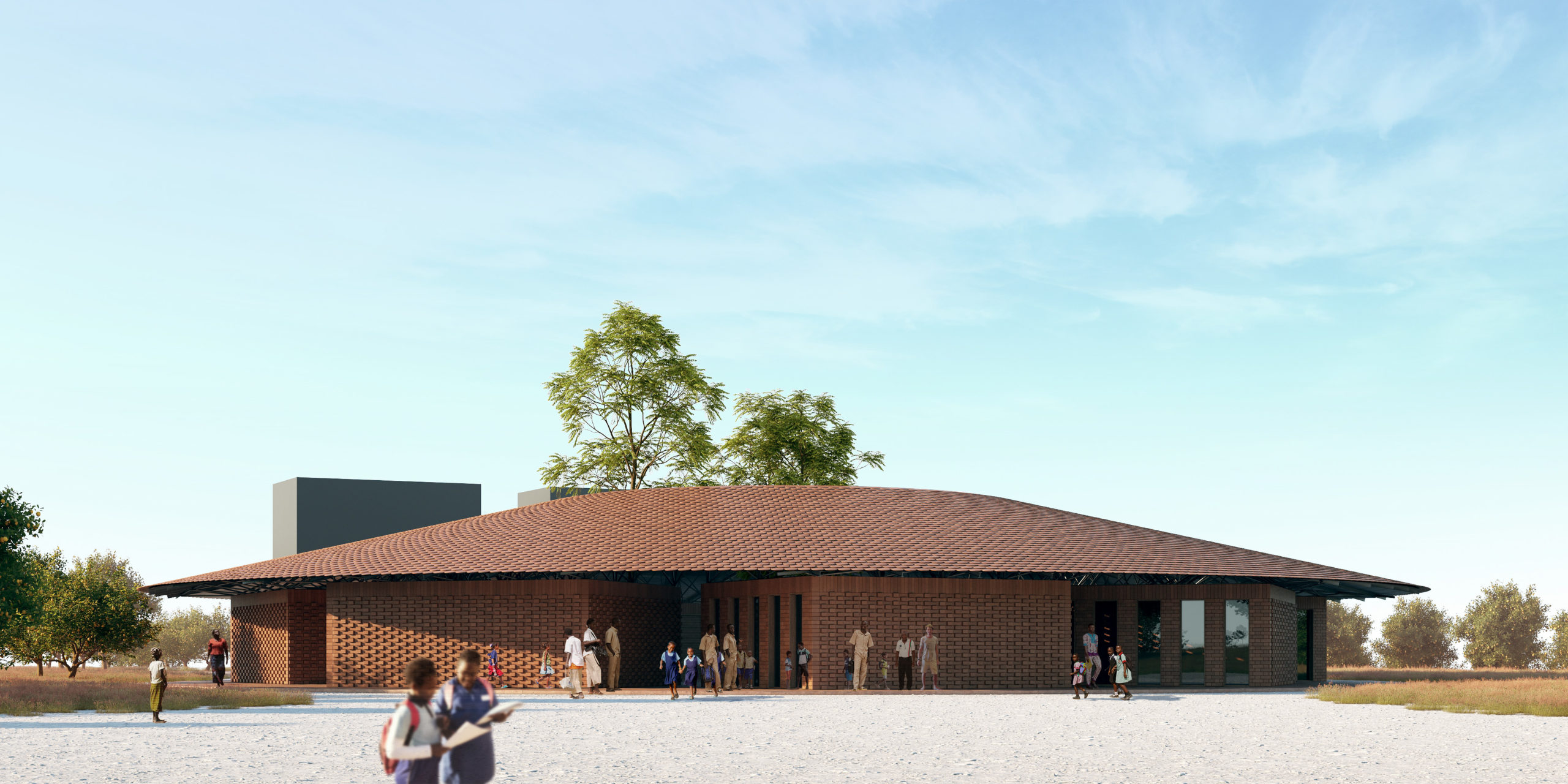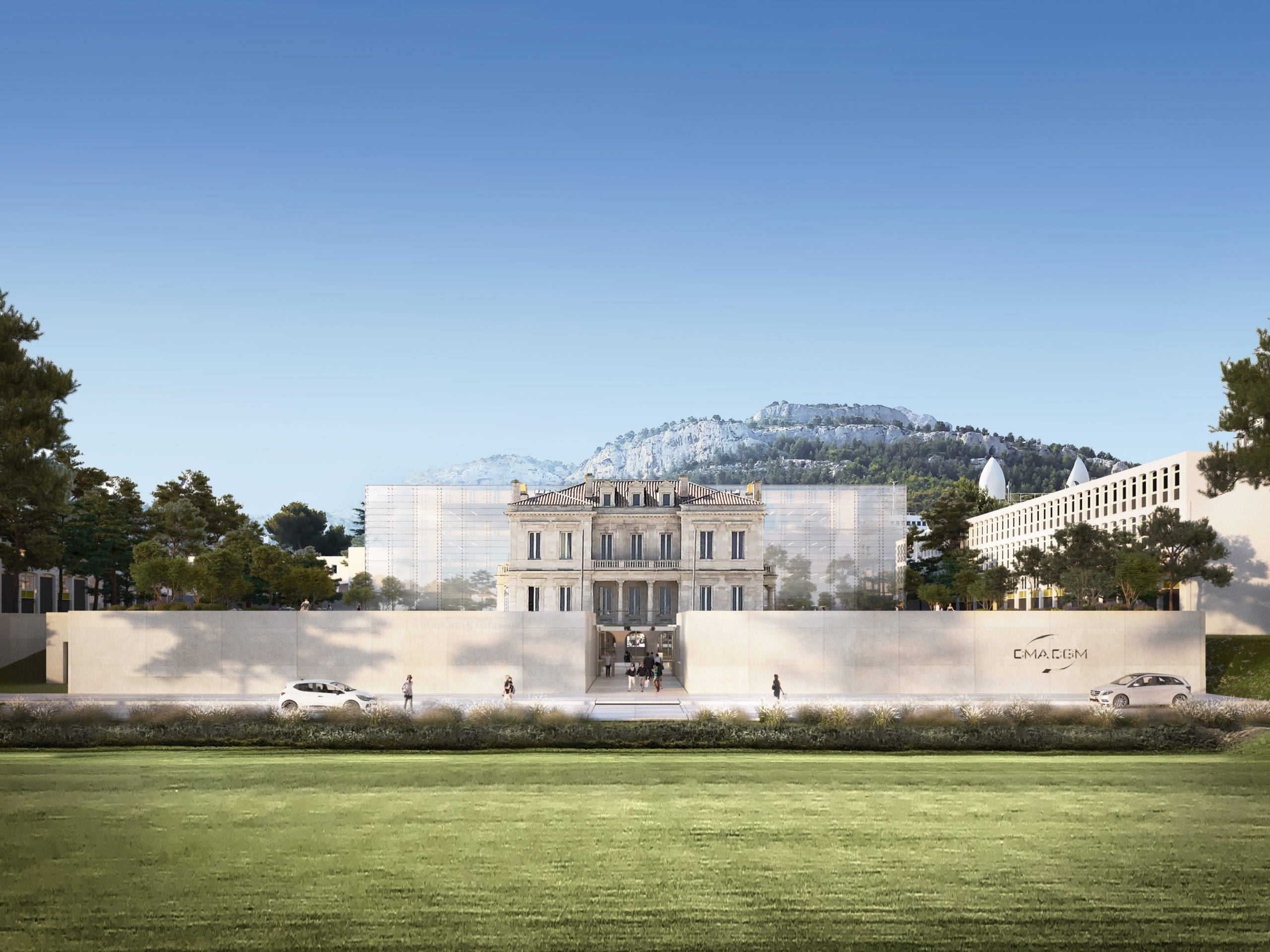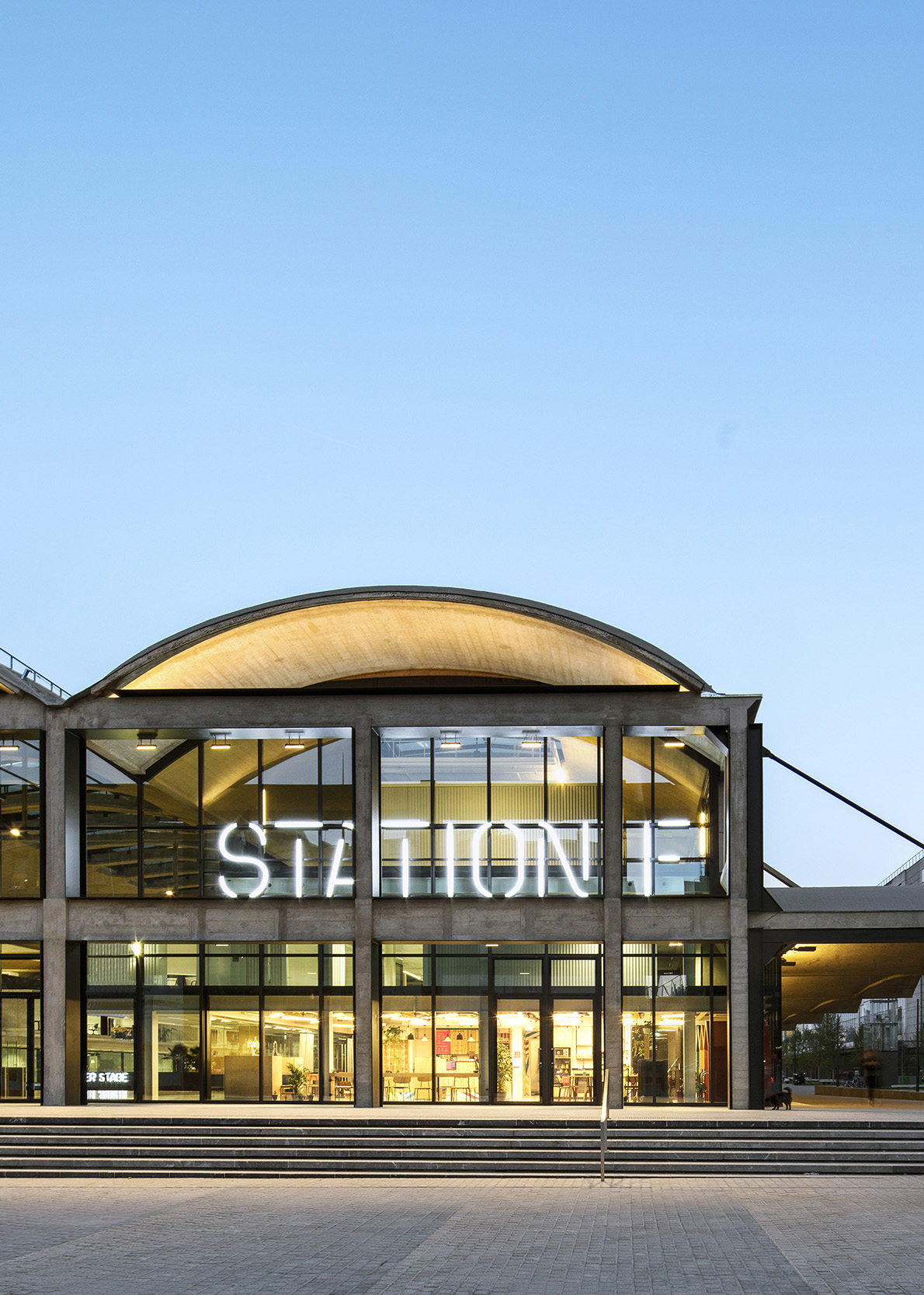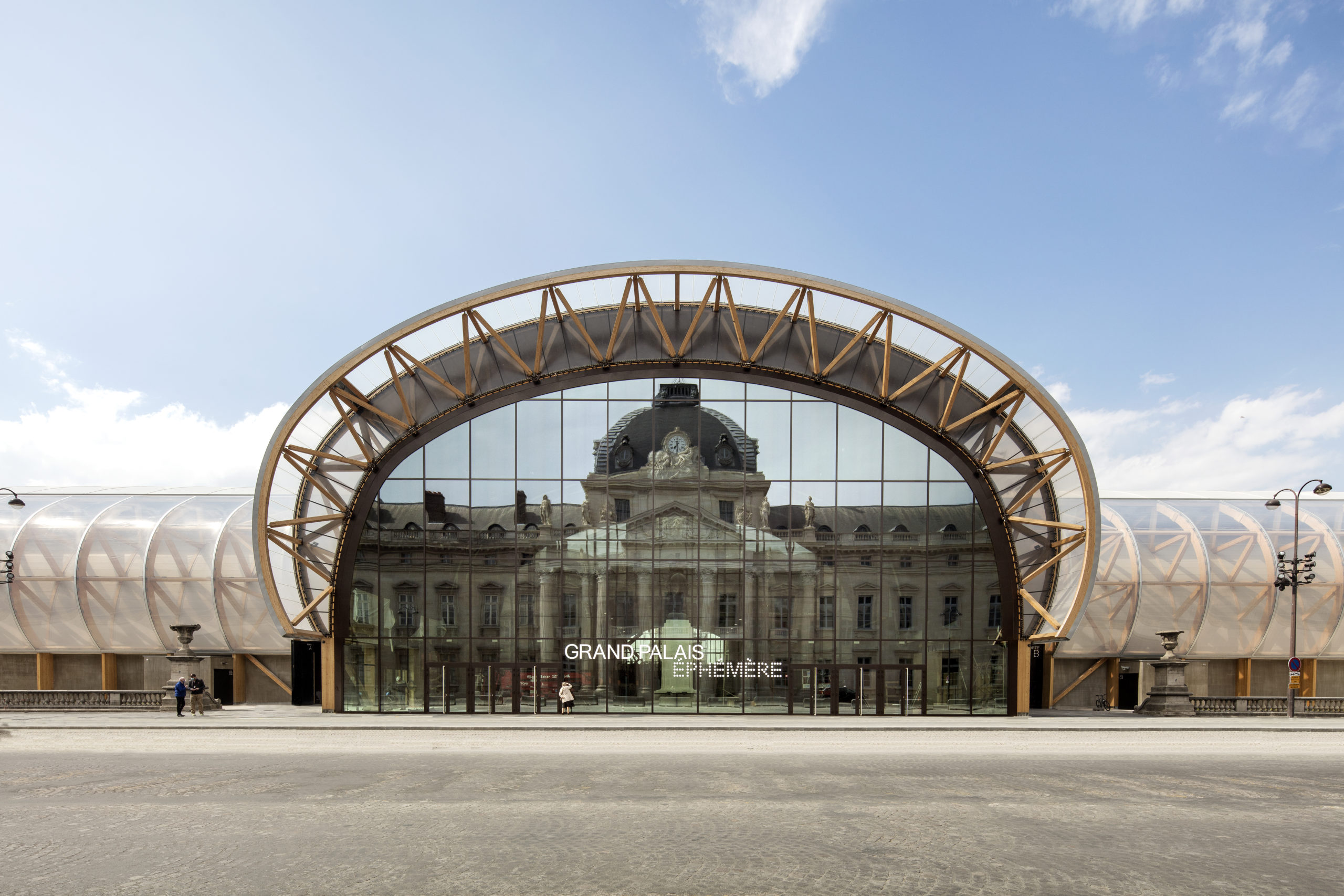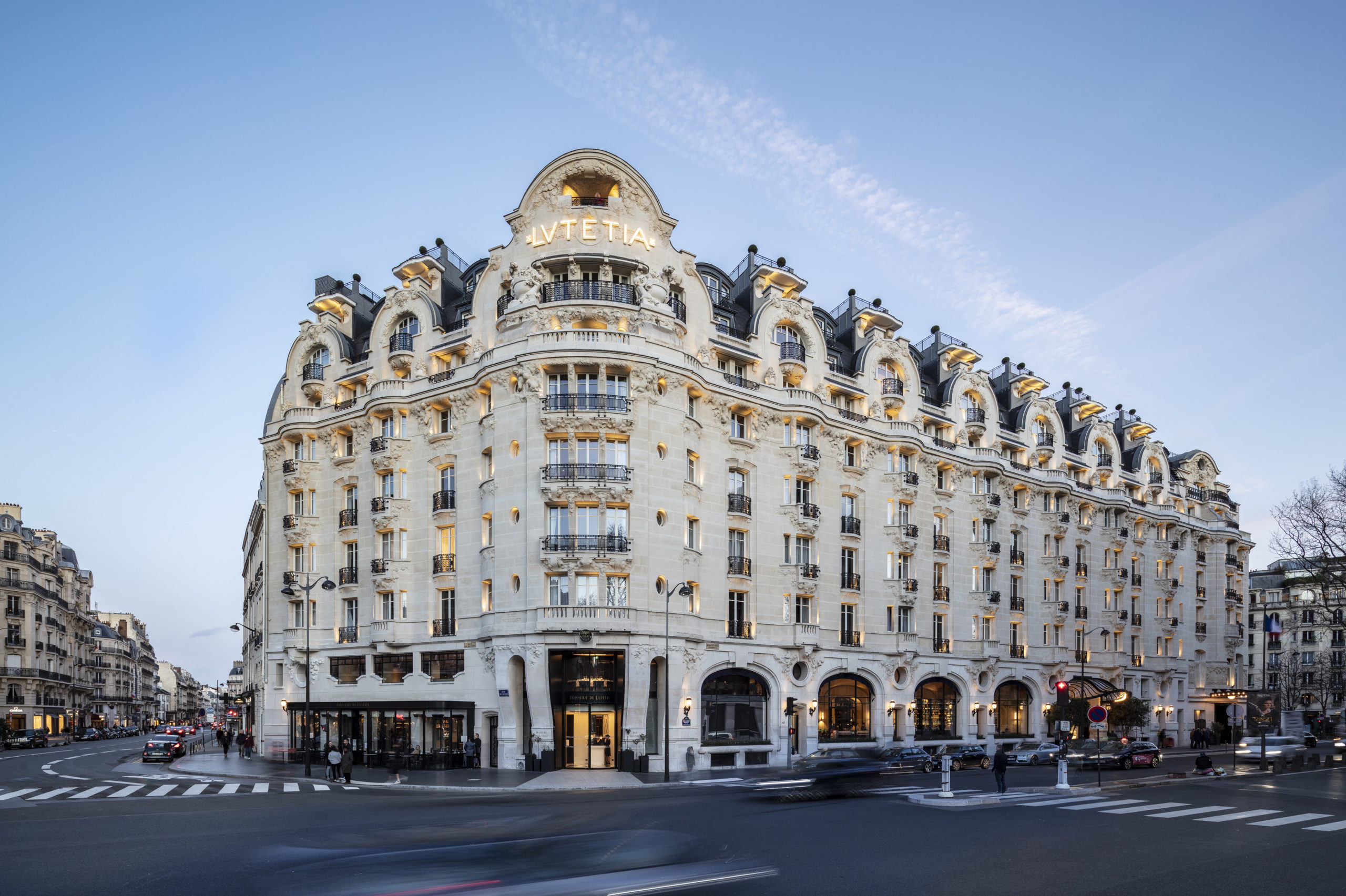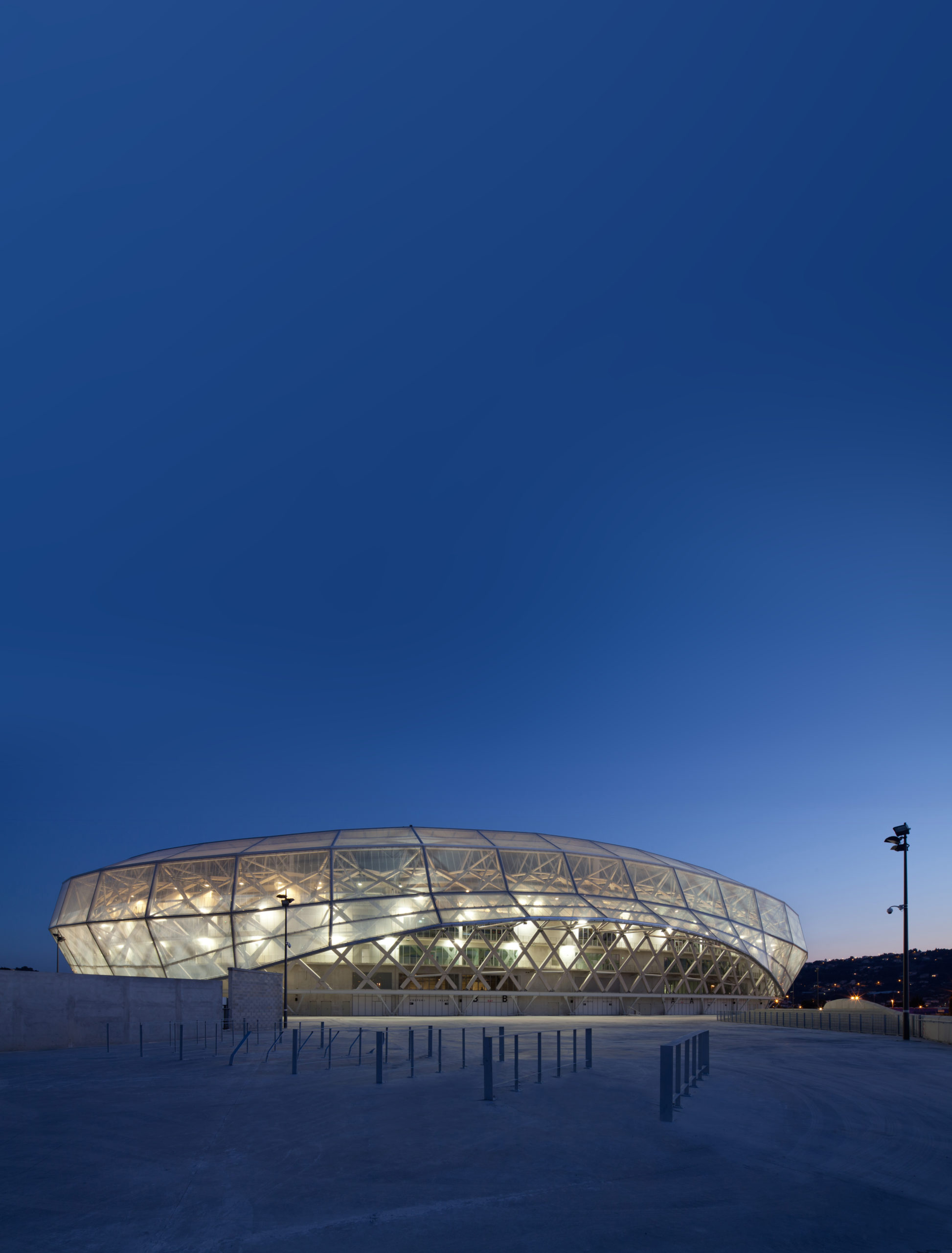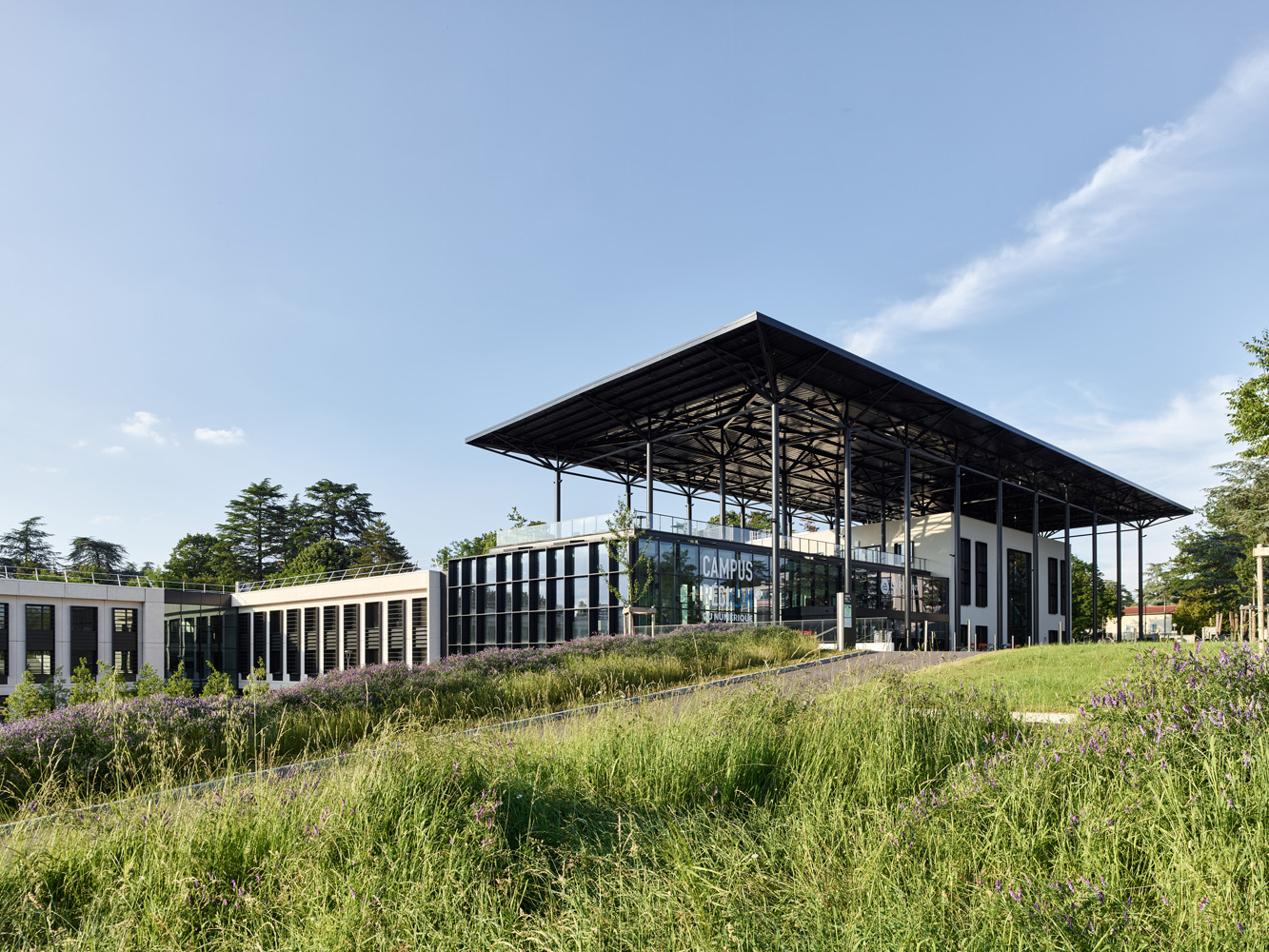
Digital Region Campus
Charbonnières-les-Bains, France
RÉGION AUVERGNE - RHÔNE-ALPES
SERL SOCIÉTÉ ÉQUIPEMENT RHÔNE LYON
BOUYGUES BÂTIMENT SUD-EST
Architect: WILMOTTE & ASSOCIÉS
Landscaper: MOZ
Structure: INGÉNIERIE CONSTRUCTION
Building services: CET
Sustainable development: MILIEU STUDIO
Area: 10 ha
Intervention area: 5 ha
Project area: 9 700 sqm
2020
Creation of the Digital Region Campus, dedicated to training in the new digital professions, on the site of the former headquarters of the Rhône-Alpes Region in Charbonnières-les-Bains, a suburb of Lyon.
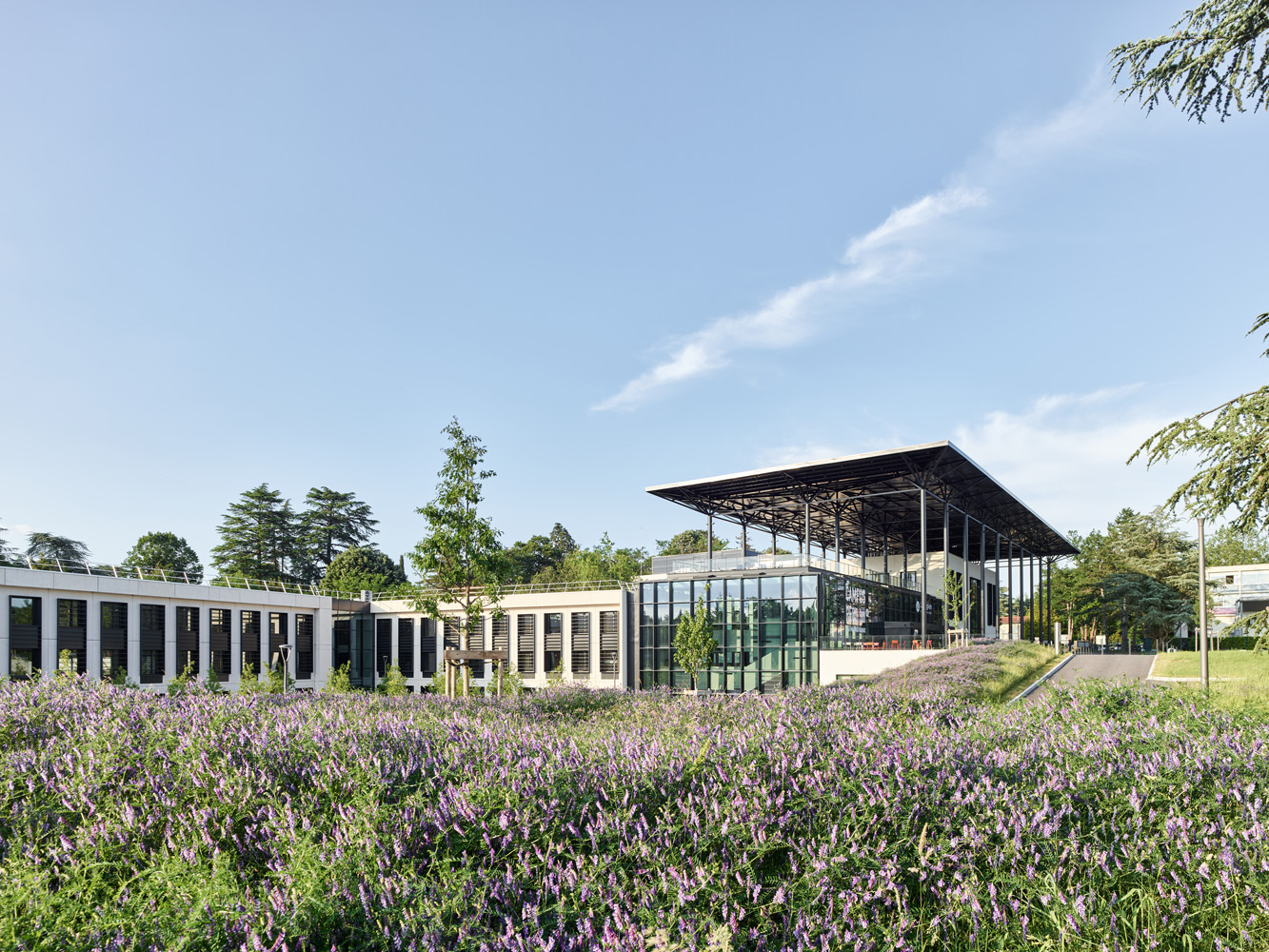
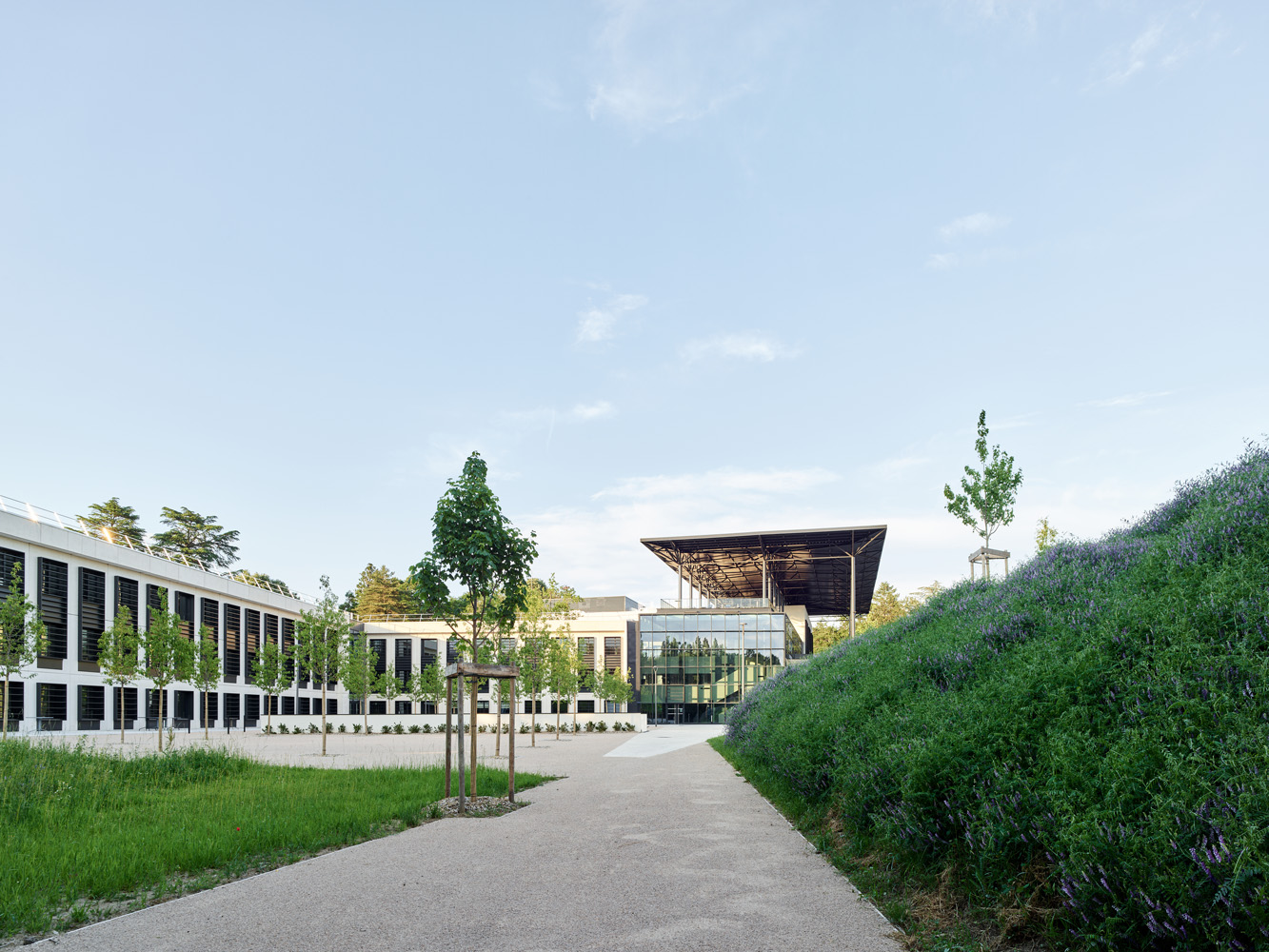
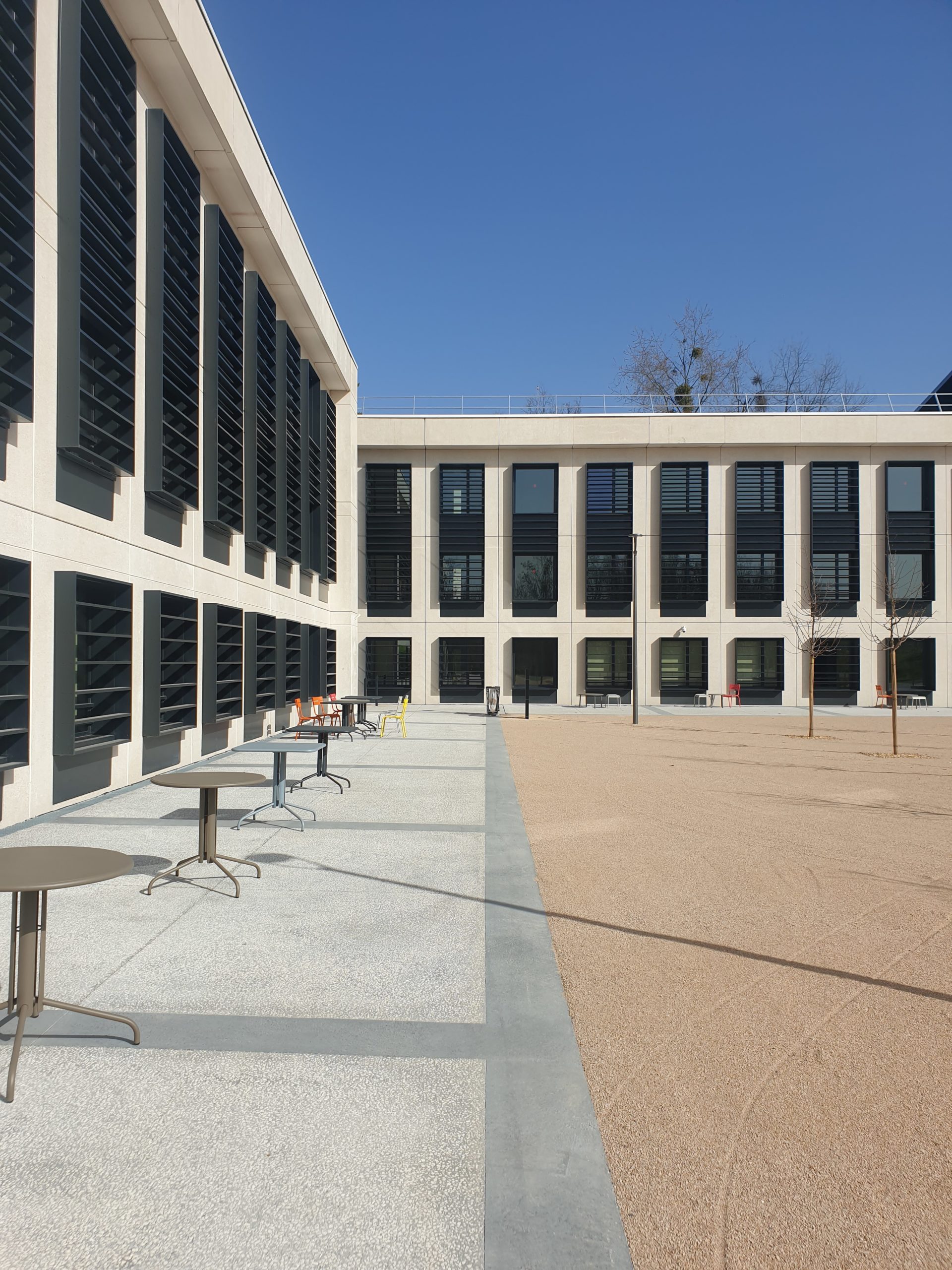
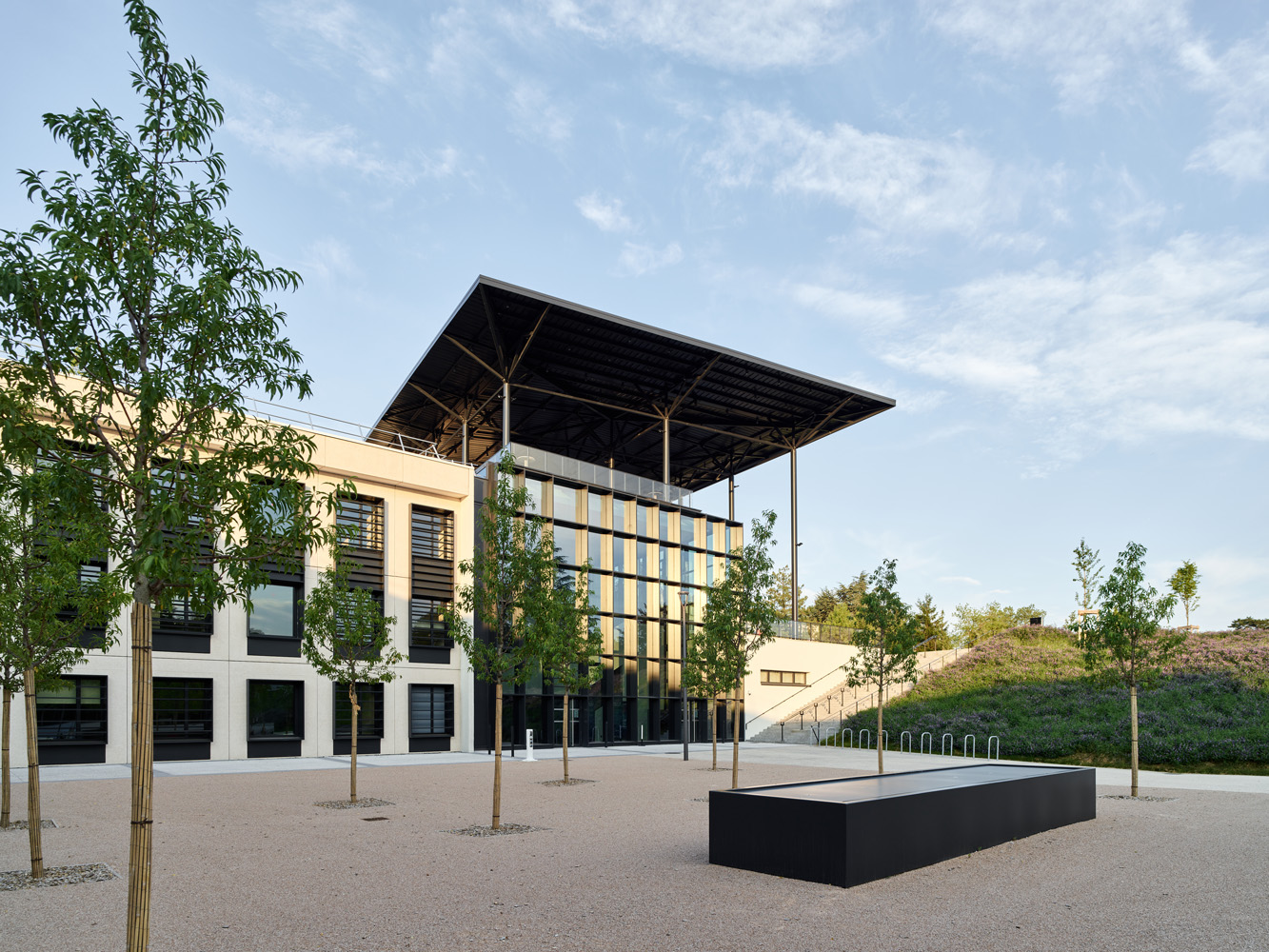
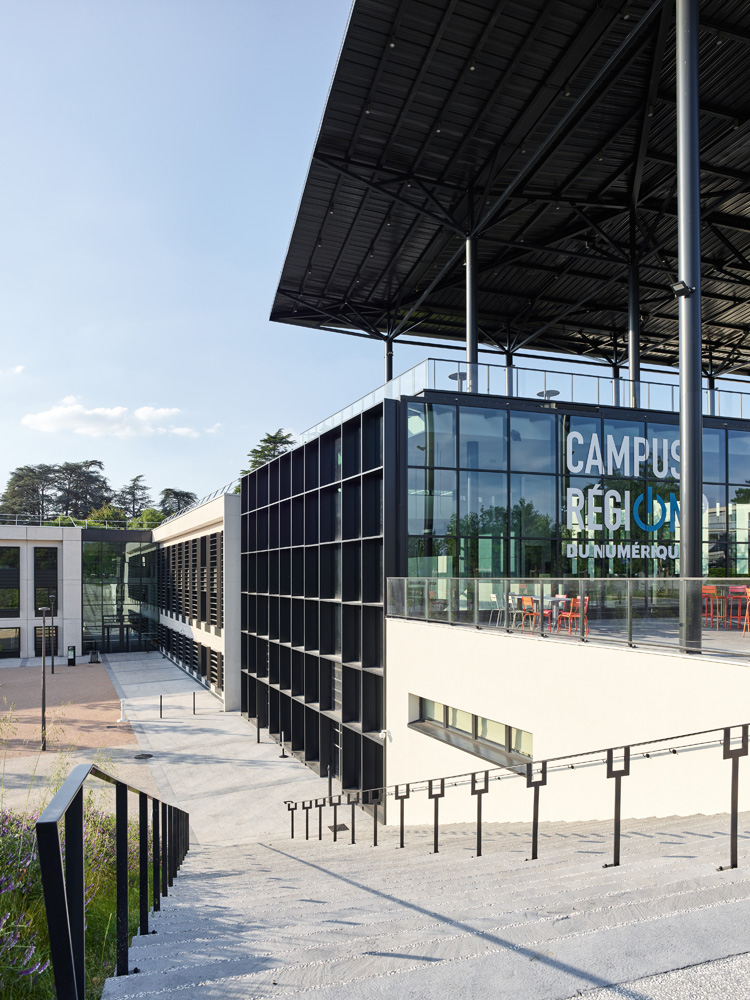
On an 11-hectare site, the campus welcomes students, teachers, and employees of companies and industrialists, within training centres completed by a full-scale factory. A unique place dedicated to digital technology and the industry of the future, it offers students a peaceful and environmentally friendly living environment.
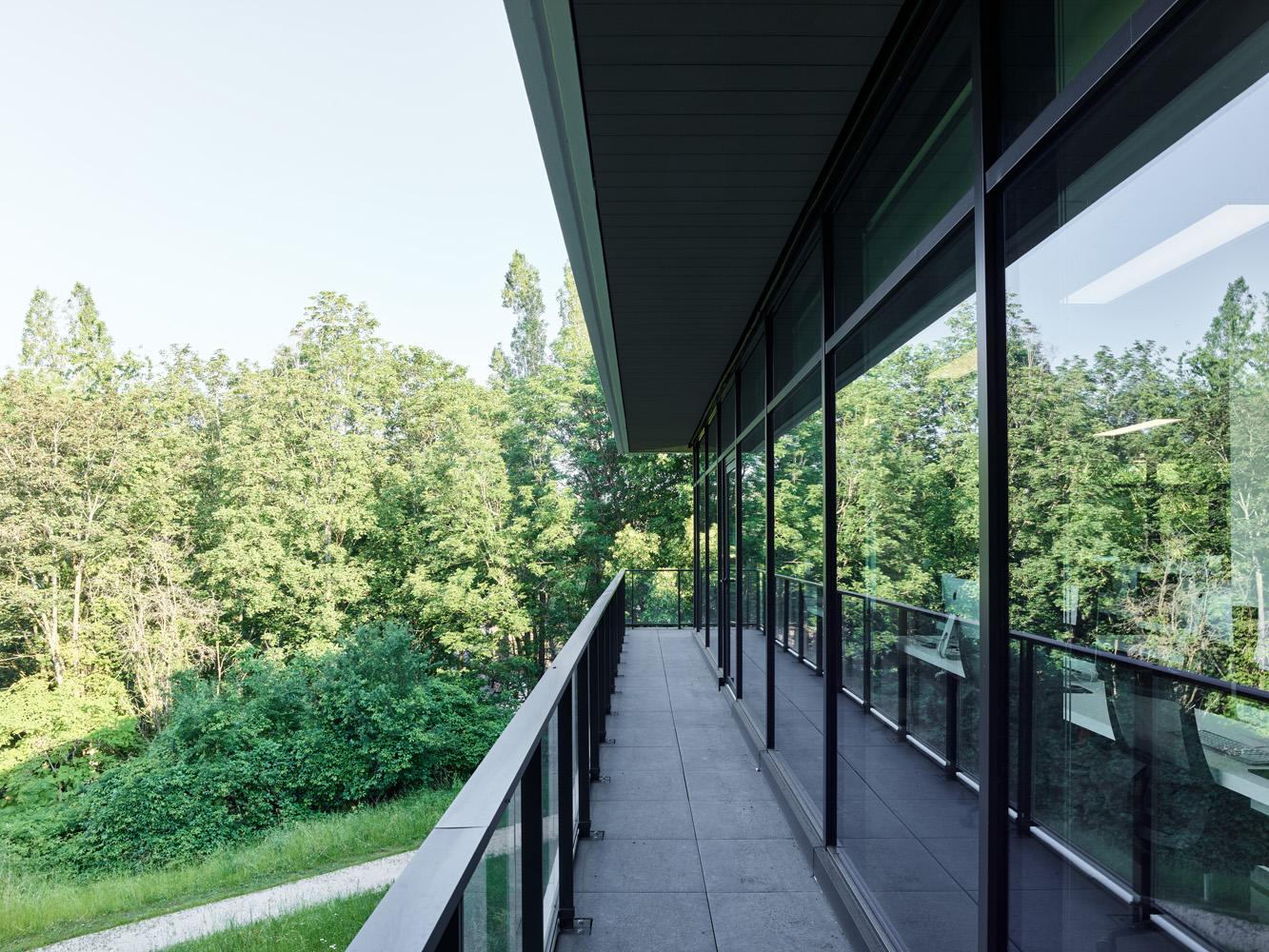
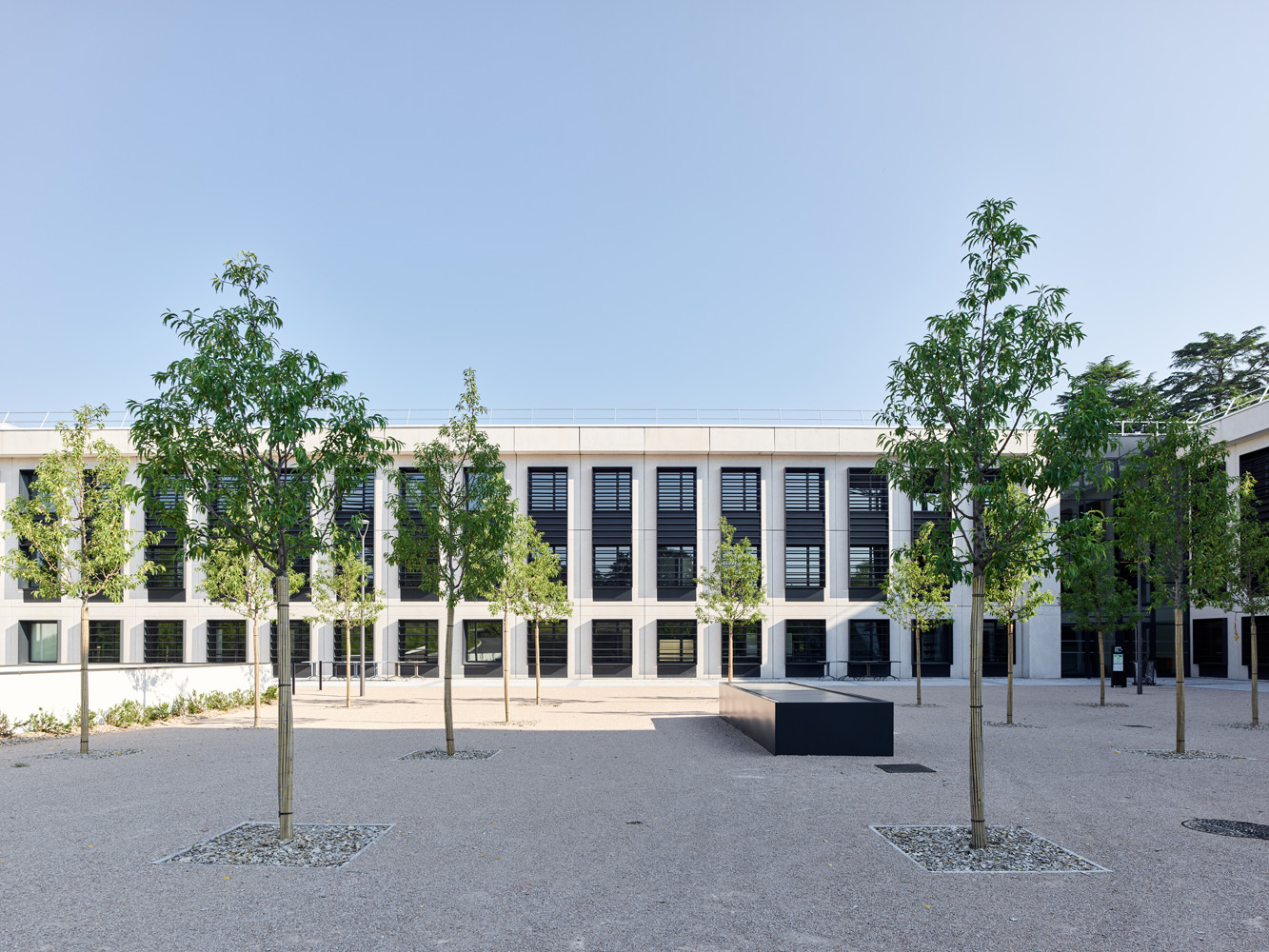
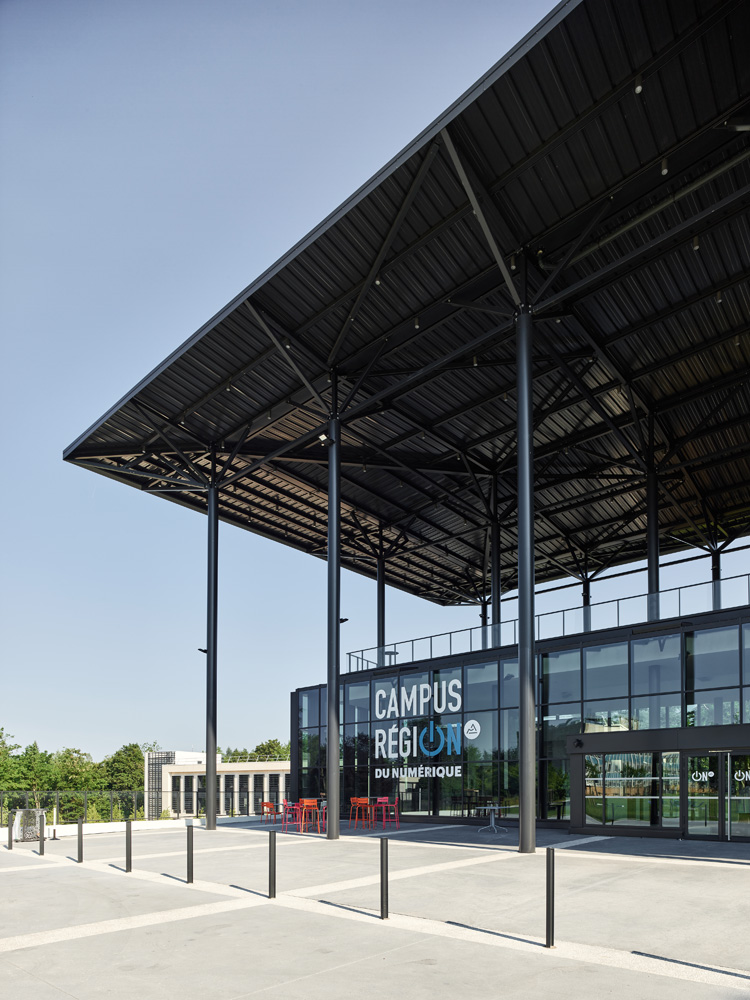
The intervention on the existing building consisted of a global reorganisation of the interior floors, the creation of new façades and the rehabilitation of existing façades, the creation of new vertical circulations by opening up the reception halls and the double or triple height atriums. The “canopy” unifies the overall image of the building while creating a strong and visible signal. It covers the old existing volumes as well as the new glazed volumes. A real technological feat, its load-bearing structure engages in a dialogue with the forest surrounding the site.
The site responds in many ways to ecological issues: 500 sqm of photovoltaic panels, 100 new trees planted, reuse of materials and offcuts from the site.


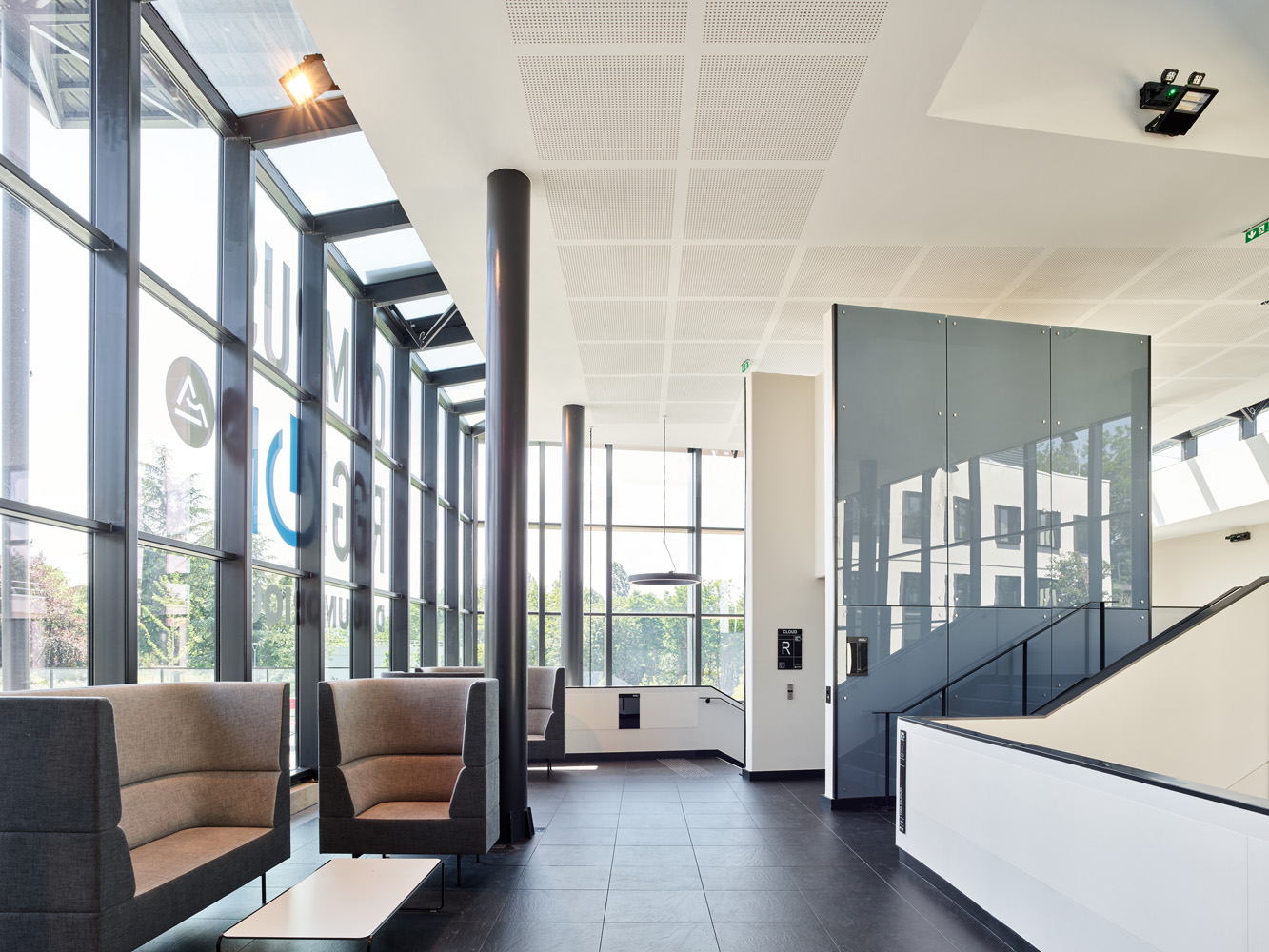
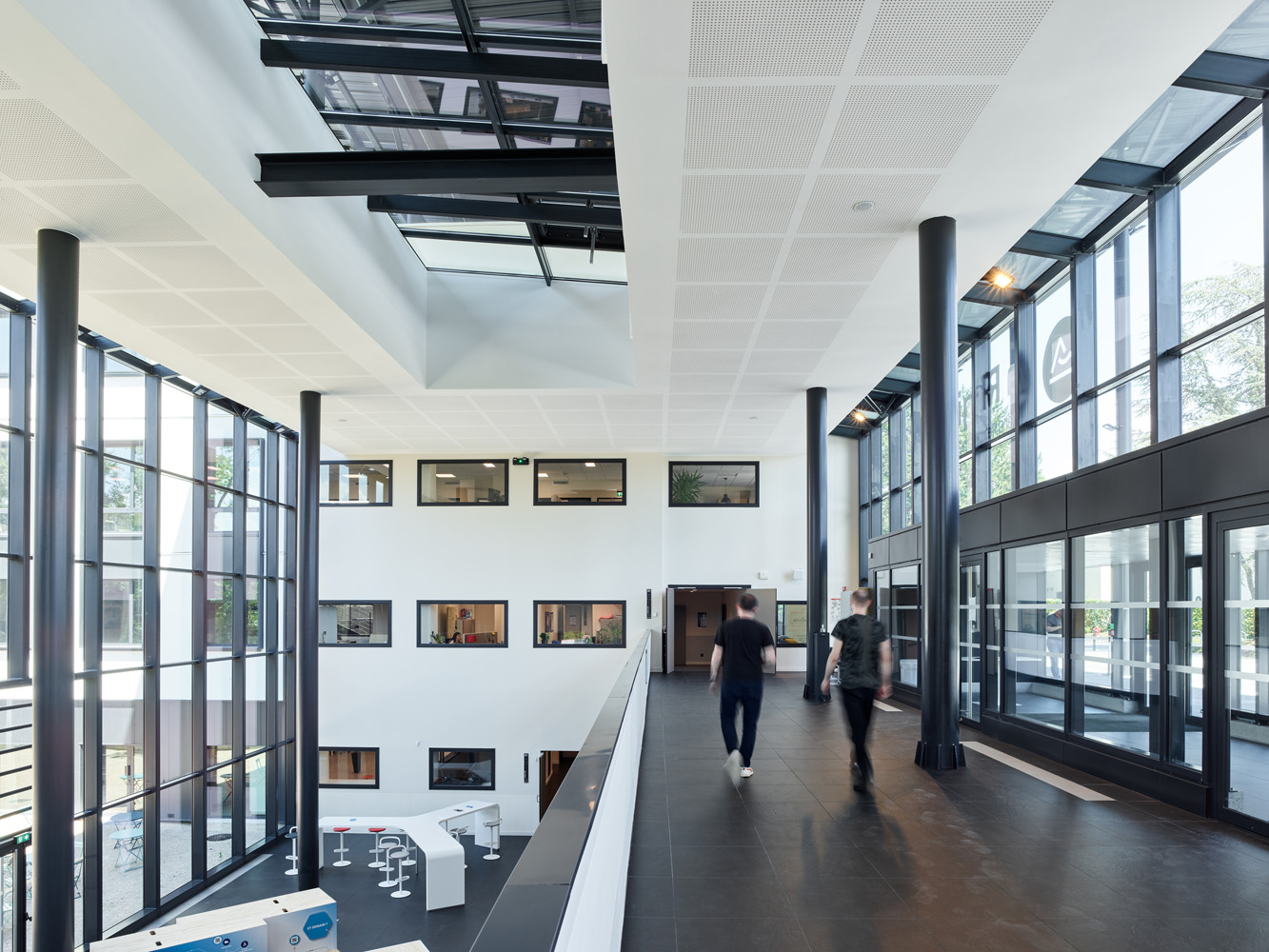
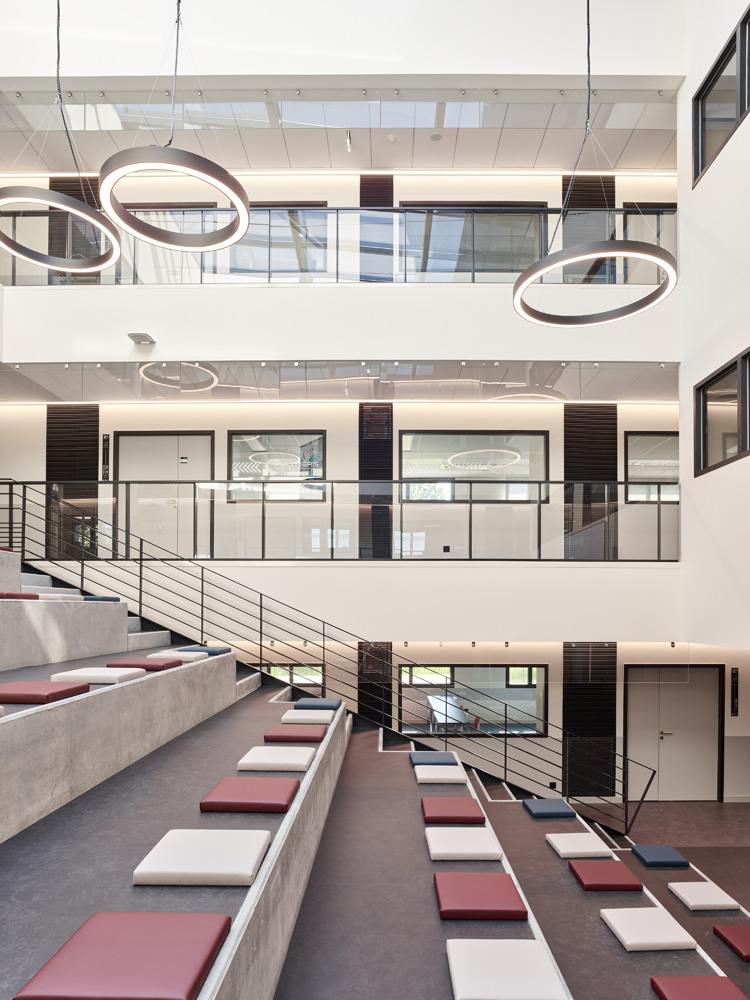
The digital imprint extends to the aesthetics and identity of the project. The Agora, a new glassed-in space, is the centrepiece, linking the existing rehabilitated buildings on the site. Driven by new technologies, the project advocates mobility, exchange and collaboration. The various players on the site interact and form a real ecosystem.
The spaces allow for a variety of configurations and emphasise modularity, minimising partitioning. The creation of new glazed vertical circulations allows the omnipresence of natural light.







